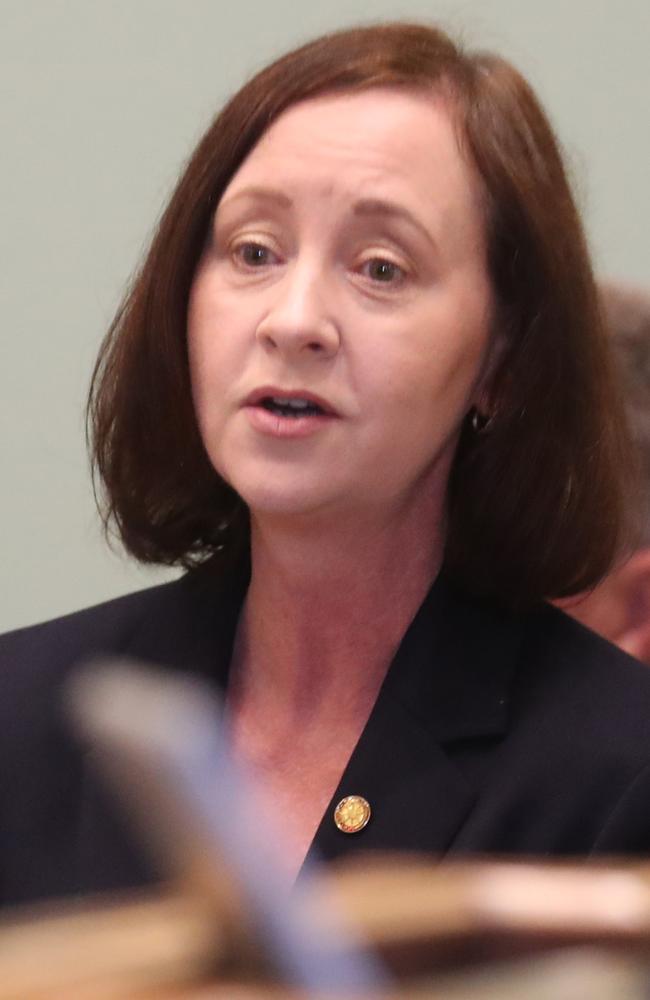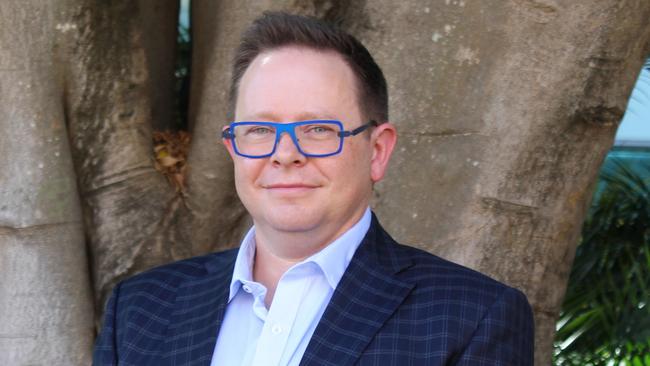All-time high: Qld hospitals in grip of biggest Covid wave
Exclusive analysis confirms Queensland is officially in the grips of its worst ever Covid wave with experts warning it may not be possible to stop cases surging. SEE THE STATISTICS

QLD News
Don't miss out on the headlines from QLD News. Followed categories will be added to My News.
The number of Queenslanders needing intensive care for Covid-19 is a third of what it was at the peak of the first Omicron wave, despite average daily hospital admissions hitting an all-time high.
It comes as Health Minister Yvette D’Ath claimed modelling had failed to predict the severity of Queensland’s third wave, saying the government knew how to slow the spread but ultimately “don’t know what’s coming”.
Exclusive analysis of pandemic data by The Courier-Mail revealed Covid-19 hospital admissions in the state had hit an average daily high of 886 on Monday, surpassing the average high of 878 patients during the initial Omicron wave.
The highest single day of hospital admissions was 928 people on January 26.
But the number of people needing intensive care due to Covid-19 was about 16 a day, compared to the high of 50 experienced during the height of the initial Omicron peak.

Mater Health Services infectious diseases director Dr Paul Griffin said this was expected because of vaccination rates, “hybrid immunity” where people get a momentary immunity boost against Covid-19 from catching it, and potentially the characteristics of the new Omicron sub-variants.
But Dr Griffin warned it was now “very likely” the overall impact of the latest Omicron wave would surpass the January surge.
He said if the community did “everything right” – like taking it upon ourselves to wear masks and get Covid-19 booster shots – the “upward trajectory could be stalled to a degree”.
“But I just can’t really see that happening at this point in time, and so would expect that things will continue to keep climbing,” Dr Griffin said.
Analysis of Covid-19 data also showed hospital admissions rose quicker during the first Omicron wave, with the state’s rates surging from nearly 290 a day to the peak of 878 in 18 days compared to the 39 days and counting during the current wave.
Just 63.8 per cent of Queenslanders aged 16 and older have had the third Covid-19 jab, with the state still holding the record for lowest coverage in the nation.
Meanwhile, Ms D’Ath said Covid-19 modelling received earlier this year had not predicted the state’s current pandemic surge and there were now “higher waves” than before.
“We thought and the advice we were getting and the modelling we saw at the start of the year that we’d keep having waves for months and years, but they’d slowly reduce and our immunity would build,” she said.
“But with these new variants and sub-variants, we’re not seeing that.”
There have been calls for the Covid-19 modelling used by national cabinet to be released – similar to the occasional times this was done during the Morrison government’s tenure.
Prime Minister Anthony Albanese’s office did not respond to questions but it is understood the federal government is working in the background to release the research.
But Premier Annastacia Palaszczuk claimed there was no modelling provided during the emergency national cabinet meeting on Saturday, though there was a briefing from chief medical officer Paul Kelly.
She said at a state level, she regularly received a “couple of graphs” that showed how the pandemic was tracking in Queensland.

Dr Griffin said the issue with Covid-19 modelling now was the “many assumptions” that needed to be used and that case numbers, amid home-testing, were unreliable.
“But having said that, it’s still very important because we do need to try and be as prepared as possible,” he said.
Ms D’Ath said the high hospital admission numbers for Covid-19, combined with the flu, and the loss of health staff due to infection, meant they were putting pressure on the state’s health system.
“We currently have 967 hospital beds being taken up with either Covid patients or influenza patients, which we know puts a lot of strain on our hospital system,” she said.
“Those sort of numbers are equivalent of 1½ times the Sunshine Coast University Hospital, just dealing with Covid and flu patients.”
She said 3 per cent of staff, on average, would usually be off sick – but Queensland’s absence rate currently hoverws around 6-7 per cent.
Ms D’Ath said 2477 Queensland Health staff were off work sick with the virus
“You get an idea of the pressures being faced on our hospital systems,” she said.
More Coverage
Originally published as All-time high: Qld hospitals in grip of biggest Covid wave



